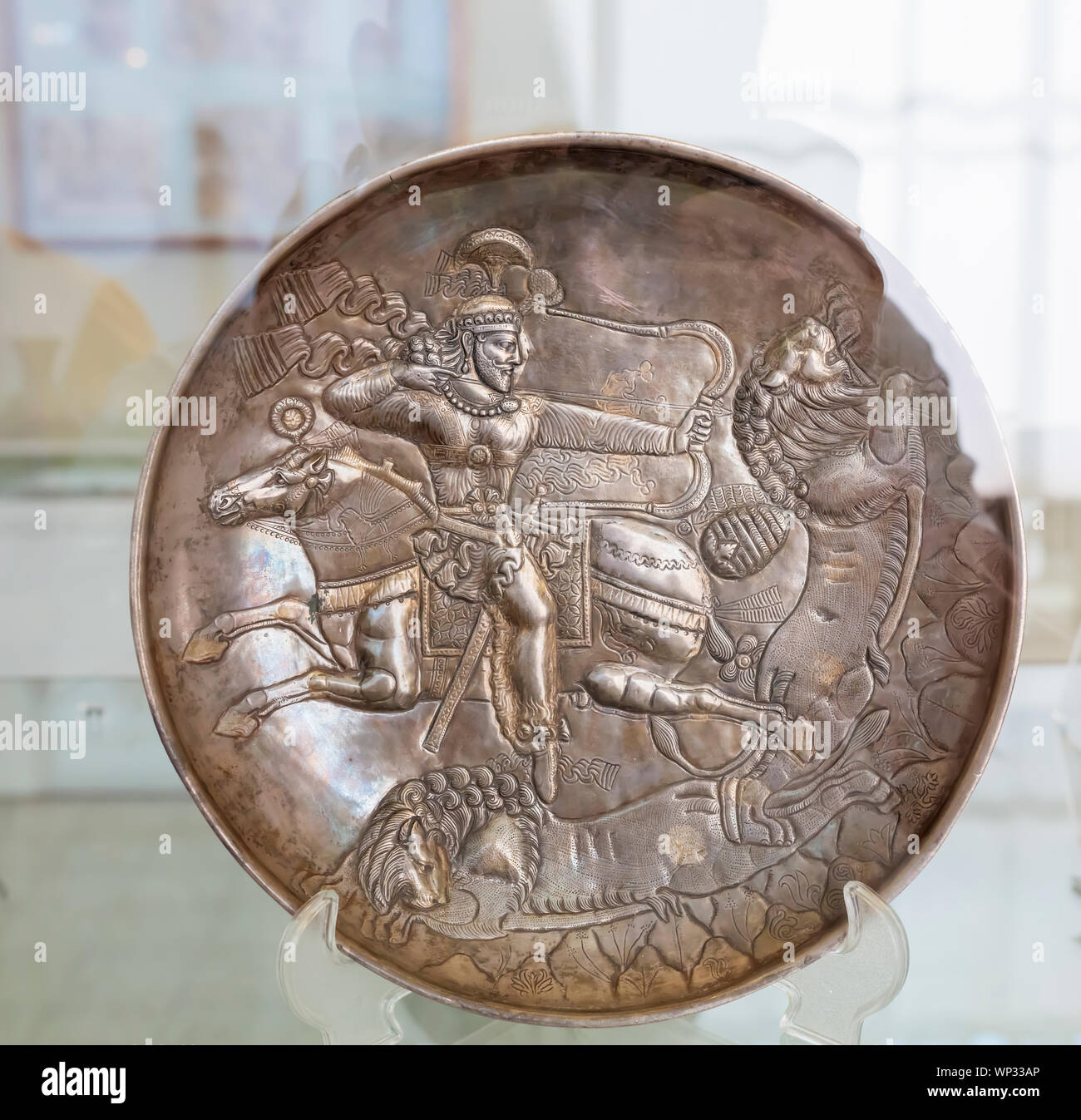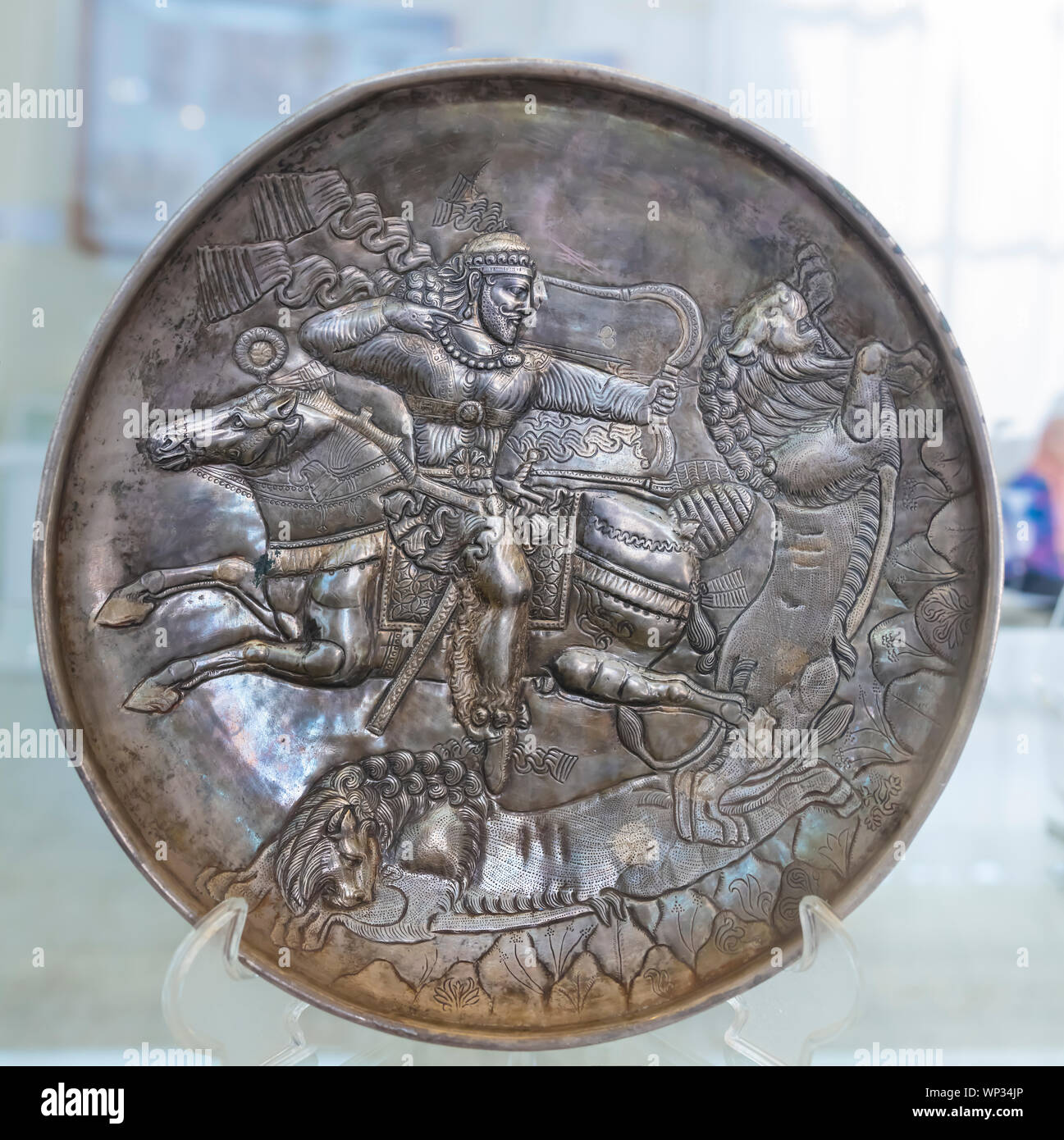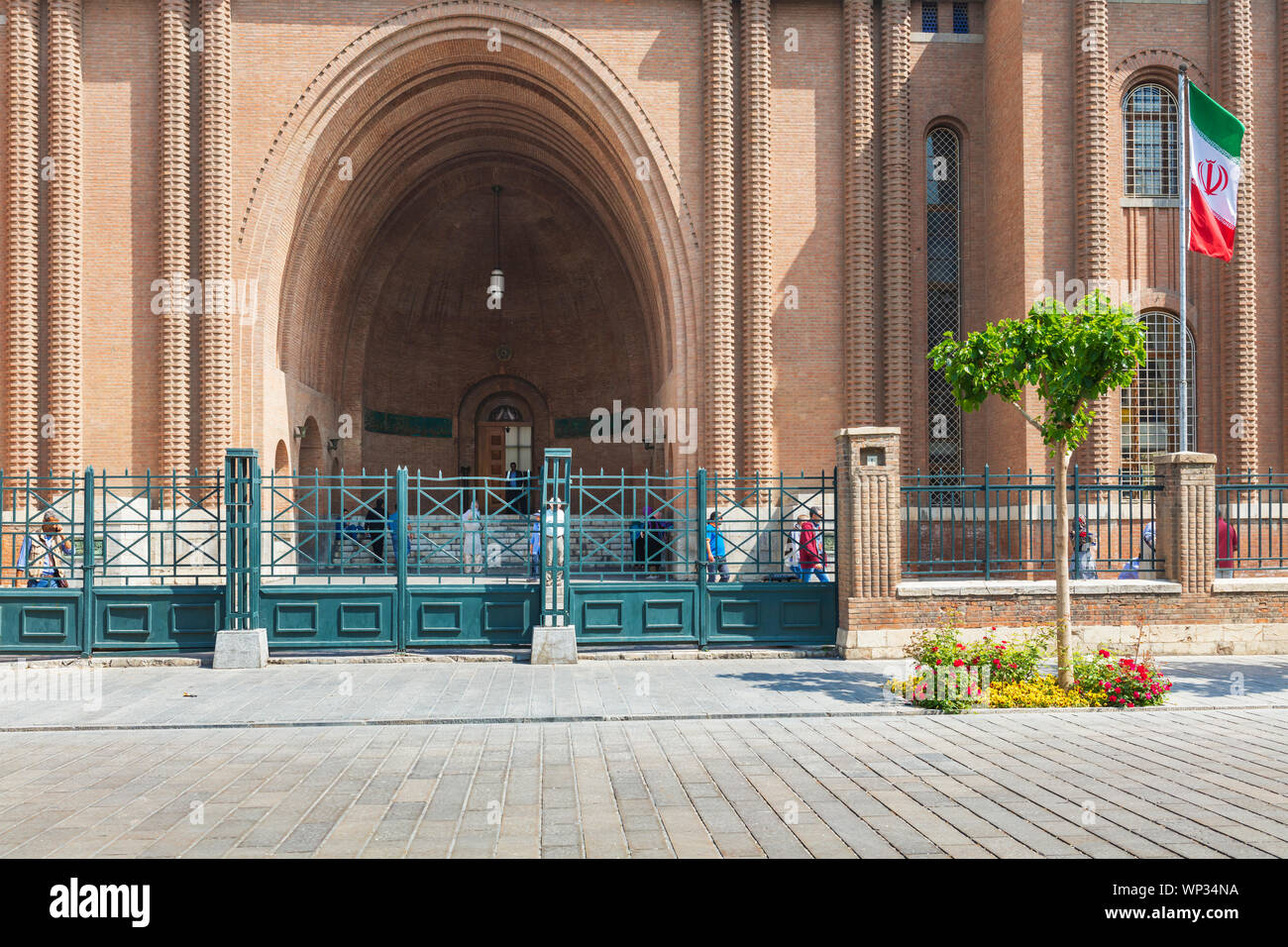Unveiling Ancient Persia: A Guide To The Ancient Iran Museum
Step into a world where ancient empires rose and fell, where art and innovation flourished, and where the very foundations of civilization were laid. The Ancient Iran Museum, a cornerstone of the National Museum of Iran, stands as a majestic gateway to the rich, millennia-old history of Persia. It is not merely a collection of artifacts; it is a meticulously curated narrative, inviting visitors to embark on an unparalleled journey through time, from the earliest human settlements to the dawn of the Islamic era.
This esteemed institution, also known as the Iran Bastan Museum, offers an immersive experience, showcasing the unique artistic and ancient artifacts that each tell a compelling, unique story of a land that was once the center of ancient civilization in Southwestern Asia. For anyone seeking to understand the profound historical and cultural depth of Iran, a visit to this remarkable museum is an essential and deeply enriching endeavor.
Table of Contents
- The National Museum of Iran: A Dual Legacy
- A Journey Through Time: Prehistoric Iran Museum
- The Historical Period Museum: Empires and Innovations
- Architectural Marvel: The Museum's Design and Construction
- Research and Conservation: Beyond the Exhibits
- Global Connections: Iran and the Classical World
- Collaborations and Future Horizons
- Planning Your Visit to the Ancient Iran Museum
The National Museum of Iran: A Dual Legacy
The National Museum of Iran, known in Persian as Muze-ye Melli-e Iran, is far more than a single entity; it is an institution formed of two distinct yet interconnected museums: the Museum of Ancient Iran (Iran Bastan Museum) and the Museum of the Islamic Era. This dual structure allows for a comprehensive chronological exploration of Iran's vast historical tapestry, from its earliest known settlements through to the rich artistic and cultural achievements of the Islamic period. Together, these two complexes house an astonishing collection of approximately 300,000 historical objects from different historical periods, cementing their reputation as some of the best museums in the world related to the culture, art, and history of Iran.
The Museum of Ancient Iran, which is the primary focus here, holds a special place in the nation's cultural heritage. It is not just a repository of relics; it is the first building in Iran specifically designed and built as a museum. This pioneering status underscores its significance in the development of modern museology within the country. Located at the western part of Mashhq Square in Tehran, Iran, its prominent position makes it a central point for cultural exploration in the capital. This national museum, also known as Iran Bastan Museum, covers an area of 2,744 square meters, providing ample space for its extraordinary exhibits.
A Journey Through Time: Prehistoric Iran Museum
The ancient Iran section within the National Museum of Iran is meticulously organized, further divided into two crucial parts: the Prehistoric Iran Museum and the Historical Period Museum. This thoughtful segmentation allows visitors to systematically trace the evolution of human civilization on the Iranian plateau. The Prehistoric Iran Museum offers an unparalleled glimpse into the very dawn of human activity in the region, showcasing relics that date back to the 6th millennium BC. This makes it the first scientific museum of Iran which exhibits relics from such an incredibly early period until the Islamic era.
Visitors to this section will encounter some of the oldest items on display, including dozens of clay bowls, jugs, and engraved coins dating back an astonishing 3,500 years and more. These artifacts are not merely decorative; they are windows into the daily lives, beliefs, and artistic expressions of early communities. Iran was exceptionally rich in valuable natural resources, especially metals, and this abundance played an important role in the development of ancient Middle Eastern civilization and trade. The exhibits powerfully illustrate how these resources fueled innovation and facilitated complex social structures long before recorded history.
A particularly illuminating aspect of the Prehistoric Iran Museum is Room 52, which highlights these ancient interconnections and the rise of distinctive local cultures. It vividly portrays the dynamics during the age of migrations after about 1400 BC, showcasing how regions like Luristan developed unique cultural identities while still being part of a broader network of exchange and influence. This section underscores Iran's pivotal role in shaping the ancient world, demonstrating its centrality not just geographically but also culturally and economically.
The Historical Period Museum: Empires and Innovations
Transitioning from the prehistoric era, the Historical Period Museum section of the Ancient Iran Museum delves into the epochs of mighty empires and groundbreaking innovations that defined ancient Iran. This part of the museum chronicles the rise of powerful dynasties such as the Achaemenids, Parthians, and Sassanians, whose influence stretched across vast territories and left an indelible mark on world history. Here, visitors can witness the tangible legacy of these civilizations, understanding how ancient Iran was indeed the center of ancient civilization in Southwestern Asia.
The collection within this section is remarkably diverse, featuring unique artistic and ancient artifacts, each telling a unique story. From imposing stone sculptures that once adorned royal palaces to intricately designed golden coins that served as currency in ancient trade networks, and from sophisticated ancient pottery that reveals advanced craftsmanship to exquisite jewelry that speaks of ancient aesthetics, all these artifacts are meticulously examined and presented to help visitors discover the National Museum of Iran in its full historical context. These objects collectively paint a vivid picture of the ingenuity, artistic prowess, and political sophistication of ancient Persian societies.
The museum of ancient Iran has exhibited the country’s historical artifacts in two parts and two separate floors, allowing for a comprehensive and organized display of this vast collection. This structured approach ensures that visitors can follow the chronological progression of Iran's history, appreciating the continuity and evolution of its cultural heritage. A complete guide to visiting Iran’s National Museum often emphasizes the importance of dedicating sufficient time to this section to better understand their historical and cultural significance, as it offers profound insights into the empires that shaped not only Iran but also the broader ancient world.
Architectural Marvel: The Museum's Design and Construction
Beyond its invaluable collections, the Ancient Iran Museum itself is a masterpiece of architectural design, holding a significant place in Iran's modern architectural history. As previously noted, it stands as the first building in Iran specifically designed and built as a museum. This pioneering spirit is reflected in its distinctive design, which draws inspiration from the grandeur of Sassanian architecture, a period renowned for its monumental and innovative building techniques. The choice of red bricks as the primary construction material further emphasizes this connection to ancient Persian building traditions, giving the structure a timeless and imposing presence that perfectly complements its contents.
The construction of this iconic building was a testament to Iranian master craftsmanship, overseen by two celebrated Iranian master builders: Ostad Morad Tabrizi and Abbas Ali Memar. Their expertise and vision brought to life a structure that is both functional as a museum space and deeply symbolic of Iran's rich architectural heritage. The project takes an area of 11,000 sq.m for the overall complex, with the Ancient Iran Museum specifically covering 2,744 sq.m. This two-storeyed museum comprises of halls for speeches and extensive exhibition spaces, thoughtfully designed to accommodate its vast and varied collection while providing an optimal viewing experience for visitors.
The museum's architecture is not just aesthetically pleasing; it is integral to the storytelling. The robust, red-brick facade evokes the ancient citadels and palaces of Persia, preparing visitors for the historical journey within. The thoughtful layout, with its clear divisions and ample space, allows for an unhurried exploration of artifacts, ensuring that each piece can be appreciated in its historical context. This deliberate design choice underscores the museum's commitment to both preserving and presenting Iran's ancient legacy with the respect and grandeur it deserves.
Research and Conservation: Beyond the Exhibits
The National Museum of Iran, encompassing the Ancient Iran Museum, is far more than just an exhibition space; it is a vibrant hub for scholarly research, conservation, and education. Its commitment to the advancement of knowledge is evident in its comprehensive infrastructure, which includes eight specialized research departments, a dedicated conservation department, a vast library, and extensive archives. These components are vital for maintaining the integrity of the collections and for deepening our understanding of Iran's ancient past.
The research departments are meticulously organized by specific archaeological and historical periods and topics. This specialized approach ensures that experts can delve deeply into particular areas of study, from prehistoric settlements to the intricacies of Achaemenid art or Sassanian coinage. This rigorous academic environment contributes significantly to the museum's E-E-A-T (Expertise, Authoritativeness, Trustworthiness) standing, as it is actively involved in generating new knowledge and insights rather than merely displaying existing ones. Scholars and researchers from around the world frequently collaborate with these departments, further solidifying the museum's reputation as a leading institution in the field of ancient Iranian studies.
The conservation department plays an indispensable role in preserving the unique artistic and ancient artifacts that the museum is home to. Given the age and fragility of many items, meticulous care and advanced scientific techniques are employed to ensure their longevity. From delicate ancient pottery to corroded metal objects, each artifact undergoes careful examination and treatment, ensuring that these invaluable pieces of history can be enjoyed by future generations. The library and archives, in turn, provide crucial documentary evidence and scholarly resources, supporting both the research and conservation efforts and offering a rich repository of information for academics and the public alike.
Global Connections: Iran and the Classical World
The narrative presented by the Ancient Iran Museum extends beyond the geographical boundaries of modern Iran, illustrating the profound and often complex interconnections between ancient Persia and other major civilizations of the classical world. These global ties are a testament to Iran's central role in ancient history, not as an isolated entity but as a vibrant participant in a vast network of cultural, artistic, and political exchange. The museum effectively showcases how ancient Iran, a powerful empire, engaged with its contemporaries, particularly the Greek and Roman worlds.
A significant highlight of these global connections is exemplified by exhibitions such as "Persia, Ancient Iran and the Classical World," which opened at the Getty Villa Museum. This exhibition, part of the Getty Museum’s program "The Classical World in Context," explicitly explored the artistic and cultural connections between the rival powers of Iran and Greece. Such collaborations and thematic exhibitions underscore the universal appeal and historical importance of ancient Persian civilization, demonstrating how its art, architecture, and political structures influenced, and were influenced by, other major powers.
Furthermore, the reach of ancient Persian artifacts extends to other prestigious institutions globally, reinforcing their universal significance. For instance, the Metropolitan Museum of Art displays ancient Persian artifacts, providing a broader audience with the opportunity to appreciate the artistic genius and historical depth of this civilization. These international displays and collaborative projects emphasize that the artifacts housed within the Ancient Iran Museum are not just Iranian heritage but are integral components of global human history, offering insights into cross-cultural dialogues that shaped the ancient world.
Collaborations and Future Horizons
In an increasingly interconnected world, the National Museum of Iran, including the Ancient Iran Museum, continues to forge vital international partnerships, ensuring its relevance and contributing to global scholarship. These collaborations are crucial for sharing knowledge, fostering cultural understanding, and advancing the field of archaeology and ancient history. A prime example of such an initiative is the memorandum of cooperation signed between the National Museum of Iran and Peking University on Saturday, July 17, 2021. This significant agreement was formalized in a virtual meeting, reflecting the modern means of fostering international academic and cultural exchange.
Such memorandums signify a commitment to joint research, educational programs, and potentially, reciprocal exhibitions, which can enrich the understanding of ancient civilizations for scholars and the public in both countries. By engaging with leading academic institutions like Peking University, the Ancient Iran Museum reinforces its authoritative position in global archaeological discourse and demonstrates its dedication to expanding the reach of Iranian heritage worldwide. These partnerships also facilitate the exchange of expertise in areas like conservation, museology, and digital archiving, ensuring that the museum remains at the forefront of its field.
The museum's ongoing efforts to collaborate with international partners and its robust internal research departments ensure that it remains a dynamic and evolving institution. These initiatives not only safeguard the past but also actively shape the future of historical and archaeological studies. The commitment to these global horizons ensures that the unique stories told by the artifacts within the Ancient Iran Museum continue to resonate with new generations and contribute to a broader, more nuanced understanding of human history.
Planning Your Visit to the Ancient Iran Museum
For anyone planning a trip to Tehran, a visit to the Ancient Iran Museum is an absolute must. It is one of the most prominent cultural sites in Iran, offering a unique collection of historical and ancient artifacts that take visitors on a journey through Iran’s rich history. To truly appreciate the depth and breadth of its offerings, some preparation and understanding of what to expect can enhance your experience.
Location and Accessibility
The museum is conveniently located at the western part of Mashhq Square in Tehran, making it relatively accessible for visitors staying in the city. Its central location often means it can be combined with visits to other nearby historical sites or cultural attractions. Public transportation options are generally available, and local taxis are plentiful, ensuring ease of access to this significant cultural landmark.
What to Expect
As an institution formed of two complexes—the Museum of Ancient Iran and the Museum of the Islamic Era—you should allocate sufficient time for your visit. The Ancient Iran Museum itself has exhibited the country’s historical artifacts in two parts and two separate floors: the Prehistoric Iran Museum and the Historical Period Museum. This structured layout allows for a logical progression through millennia of history. Expect to see everything from the earliest tools and pottery dating back 6th millennium BC, to intricate stone sculptures, golden coins, and elaborate metalwork from the great Persian empires. Each exhibit is designed to tell a unique story, providing a comprehensive guide to understanding Iran’s historical and cultural development.
Tips for a Deeper Dive
- **Allocate Time:** To truly absorb the vast collection, plan for at least 2-3 hours for the Ancient Iran Museum alone, and more if you intend to visit the Islamic Era Museum as well.
- **Consider a Guide:** While information is provided in English, a knowledgeable local guide can offer deeper insights and context for the artifacts, enriching your understanding of their historical and cultural significance.
- **Focus on Key Exhibits:** If time is limited, identify key periods or types of artifacts that particularly interest you (e.g., Achaemenid reliefs, Luristan bronzes) and prioritize those sections.
- **Wear Comfortable Shoes:** You will be doing a fair amount of walking through the exhibition halls.
Why Visit the Ancient Iran Museum?
Visiting the Ancient Iran Museum is not just about seeing old objects; it's about connecting with a civilization that profoundly shaped the world. It offers a complete guide to better understand Iran's historical and cultural narrative, from its earliest inhabitants who mastered metalwork and trade, influencing the development of ancient Middle Eastern civilization, to the powerful empires that left an enduring legacy. It’s an opportunity to witness firsthand the unique artistic and ancient artifacts that define Iran’s rich heritage and to appreciate why ancient Iran was the center of ancient civilization in Southwestern Asia. If you plan to visit Iran, this museum is an indispensable stop that promises a deeply insightful and memorable experience.
Conclusion
The Ancient Iran Museum stands as a magnificent testament to the enduring legacy of one of the world's oldest and most influential civilizations. As the first purpose-built museum in Iran, meticulously constructed by master builders and inspired by Sassanian grandeur, it is a treasure trove of knowledge and beauty. From the prehistoric artifacts that reveal the ingenuity of early human societies to the majestic relics of powerful empires like the Achaemenids and Sassanians, the museum offers an unparalleled journey through Iran's rich history.
Beyond its impressive exhibits, the museum functions as a vital center for research, conservation, and international collaboration, exemplified by its partnership with Peking University and its role in global exhibitions. It is a place where expertise, authoritativeness, and trustworthiness converge, providing invaluable insights into ancient interconnections and the rise of distinctive cultures. A visit to the Ancient Iran Museum is more than just sightseeing; it is an immersive educational experience that illuminates the profound impact of ancient Iran on the world. We encourage you to plan your visit, explore its fascinating collections, and share your own discoveries about this extraordinary cultural gem. What artifact or period are you most excited to explore?

Sasanian silver plate, Mazandaran, Museum of Ancient Iran, National

Sasanian silver plate, Mazandaran, Museum of Ancient Iran, National

Museum of Ancient Iran, National Museum of Iran, Tehran, Iran Stock